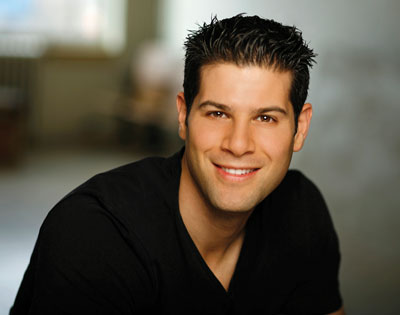
Features
Health and wellness
Hot topics
Focus on Fitness 2012: Pain Management
In my practice, I’ve treated many firefighters and I tell them all the same thing: think of yourself as an athlete.
September 7, 2012
By DR. Austin Green
In my practice, I’ve treated many firefighters and I tell them all the same thing: think of yourself as an athlete. Athletes, like firefighters, rely on their bodies for execution and performance, and like athletes, firefighters need to find ways to overcome and manage aches and pains to do what their jobs require of them at the level to which they are accustomed. In addition to treatment, ice and heat are cheap, easily accessible and effective tools that firefighters can use to manage aches and pains. Ice and heat can play critical roles in the management and treatment of many issues, but knowing which to use and how to use it could be the determining factor in whether you are helping the problem or making it worse. Here’s what you need to know.
Ice is your friend
Ice is like a friend who tells you what you need to hear not what you want to hear: in other words, it may not feel good but it’s what you need. Ice will decrease swelling, inflammation and blood flow, reduce muscle spasms and alleviate bruising and pain.
When/how to use ice:
- Ice should always be used for acute pain or injuries, or for a re-aggravated or re-occurring injury or condition.
- Anything frozen counts as ice, so if you don’t have access to ice cubes or an ice pack, anything you can find in your freezer will do the trick.
- Generally, ice should be applied for 10 to15 minutes, then removed for 30 to 60 minutes so that your skin temperature can to go back to normal. This should be repeated several times.
- When treating an acute injury, apply the ice as quickly as possible – it should be used for the first 24 to 72 hours.
- Ice should be applied after activity, never before it.
- Apply ice only to the problem area; entering a cold tub or applying ice to a larger area will not have the same effect. As mentioned, the goal of using ice is to decrease swelling and blood flow to the affected area; this cannot be achieved if ice is applied to a larger, more general area.
- If you have a chronic condition that is aggravated by activity, apply ice as a management tool to decrease the likelihood of a flare up or further aggravation.
Heat is the key when treating repetitive strain or chronic injuries
In my practice, about 90 per cent of the conditions I treat are classified as repetitive strains or chronic injuries, with the other 10 per cent being acute. I use heat on my patients prior to treating them; not a day goes by during which I don’t recommend heat to help manage someone’s pain or condition. Heat will increase blood flow, relax muscles, decrease pain and promote healing.
When/how to use heat:
- Use heat for chronic injuries, such as tight muscles.
- Use before an activity to warm up muscles, not after.
- If you often wake up with stiffness, use heat before bed.
- Heat should be applied for 15 to 20 minutes but can be used for longer. If you use an electric heating pad, be sure not to fall asleep on it as they can cause burning.
- Apply the heat to the problem area. Going in a hot tub or sauna, or applying the heat to a larger area will not have the same effect. As with cold treatments, the goal of using heat is to increase blood flow to the affected area and this cannot be achieved if heat is applied to a larger, more general area.
- Use moist heat rather than dry heat, such as a hot water bottle or a gel pack.
So whether your injury is new, acute, or something that’s been lingering for a long time, be sure to use ice and/or heat to help you manage the situation and, most importantly, to stay happy and healthy at work.
Finally, if you are experiencing a problem, get assessed by a qualified practitioner. When it comes to your health, the more active you are in controlling it, the healthier you will be.
 |
|
Specializing in sports therapy, Dr. Austin Green uses a combination of techniques including specialized soft tissue therapy, chiropractic adjustments, medical-acupuncture and assisted stretching. Green holds a Bachelor of Arts from the University of Western Ontario and a Doctor of Chiropractic from the Canadian Memorial Chiropractic College. Specially designed to help elevate athletic performance and the healing process of sports and fitness-related injuries, the newly launched product line, aptly named Dr. Green’s, includes orthotics, heat packs and products designed to prevent and assist with injury. Contact Green at drg@yourdrgreens.com
Print this page